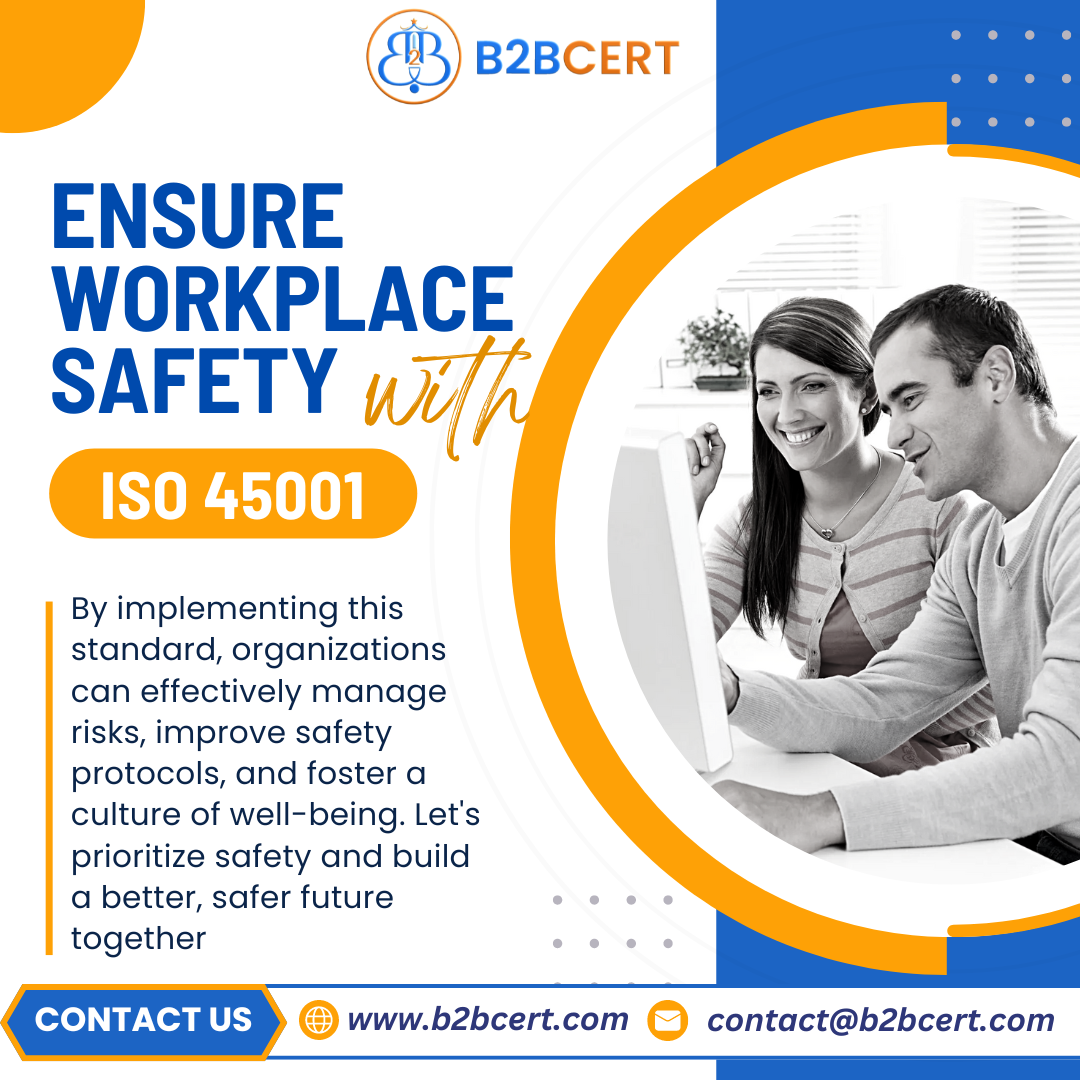Understanding the Hierarchy of Controls According to ISO 45001

ISO 45001 Certification in Bangalore - In today’s fast-paced work environments, ensuring occupational health and safety (OHS) is not just a legal obligation—it is a vital component of sustainable business operations. ISO 45001, the international standard for occupational health and safety management systems (OHSMS), provides a structured approach to managing workplace risks and improving safety performance. One of the most crucial aspects of ISO 45001 is the hierarchy of controls, a systematic method for eliminating or minimizing hazards in the workplace.
What is the Hierarchy of Controls?
The hierarchy of controls is a framework used in ISO 45001 to prioritize safety interventions based on their effectiveness. Instead of merely reacting to accidents or incidents, this approach emphasizes proactive hazard management. It is essentially a stepwise system designed to control risks from most effective to least effective measures. The hierarchy ensures that organizations focus first on eliminating hazards rather than relying solely on administrative controls or personal protective equipment (PPE), which are less reliable.
The hierarchy of controls, as outlined in ISO 45001, is generally represented in the following order:
-
Elimination
-
Substitution
-
Engineering Controls
-
Administrative Controls
-
Personal Protective Equipment (PPE)
1. Elimination
Elimination is the most effective control measure. It involves completely removing the hazard from the workplace. For example, if a particular machine poses a risk due to moving parts, elimination could mean redesigning the process so the task no longer requires the use of that machine. By completely removing the hazard, the risk to workers is eradicated, making this the top priority in the hierarchy of controls.
Organizations pursuing ISO 45001 Certification in Bangalore are trained to identify such hazards through thorough risk assessments and implement elimination strategies wherever possible.
2. Substitution
When elimination is not feasible, substitution is the next best option. Substitution involves replacing a hazardous substance or process with a less dangerous one. For instance, replacing toxic chemicals with safer alternatives or using quieter machinery to reduce noise exposure. While this does not completely remove the hazard, it significantly reduces the potential for harm.
ISO 45001 Consultants in Bangalore often guide businesses on effective substitution strategies, ensuring compliance with both safety regulations and operational requirements.
3. Engineering Controls
Engineering controls are physical modifications to equipment, processes, or the environment to reduce exposure to hazards. Examples include installing machine guards, ventilation systems to remove airborne contaminants, or soundproof enclosures around noisy equipment.
Unlike administrative controls, engineering controls do not rely on worker behavior for effectiveness. They are considered highly effective because they act as barriers between the worker and the hazard. Companies seeking ISO 45001 Services in Bangalore often implement engineering controls as part of a broader OHS management system, ensuring consistent and reliable risk mitigation.
4. Administrative Controls
Administrative controls involve changing the way people work to reduce exposure to hazards. This includes policies, procedures, training, shift rotations, and signage to manage risk. For example, limiting the duration of exposure to hazardous conditions or providing safety training programs.
While administrative controls are essential, they are less effective than elimination, substitution, or engineering controls because they depend on human behavior. Nevertheless, they play a critical role in creating a safety-conscious culture within an organization. ISO 45001 emphasizes that administrative controls should complement, not replace, higher-level interventions in the hierarchy.
5. Personal Protective Equipment (PPE)
PPE is the last line of defense in the hierarchy of controls. It includes items like gloves, helmets, goggles, ear protection, and respirators. While PPE protects workers from exposure to hazards, it does not eliminate the hazard itself. It is also dependent on correct usage and maintenance, making it the least effective control measure.
Despite its limitations, PPE remains essential in situations where hazards cannot be eliminated, substituted, or fully controlled through engineering or administrative measures. ISO 45001 Consultants in Bangalore often advise organizations on proper PPE selection, training, and monitoring to maximize its effectiveness.
Implementing the Hierarchy of Controls in ISO 45001
For organizations pursuing ISO 45001 Certification in Bangalore, understanding and applying the hierarchy of controls is crucial. The implementation process typically involves:
-
Hazard Identification: Systematically recognizing all potential workplace hazards.
-
Risk Assessment: Evaluating the likelihood and severity of harm associated with each hazard.
-
Control Selection: Applying the hierarchy of controls to manage identified risks.
-
Monitoring and Review: Continuously assessing control effectiveness and updating measures as necessary.
ISO 45001 Services in Bangalore ensure that organizations not only comply with international OHS standards but also embed a culture of continuous improvement in workplace safety practices.
Benefits of Applying the Hierarchy of Controls
Adopting the hierarchy of controls offers several advantages:
-
Enhanced Safety: By focusing on hazard elimination and risk reduction, workplaces become significantly safer.
-
Regulatory Compliance: Aligns with international and local OHS regulations, reducing the risk of penalties.
-
Cost Efficiency: Preventing incidents through proactive controls is often more cost-effective than dealing with accidents after they occur.
-
Improved Worker Morale: A safe work environment fosters trust, satisfaction, and productivity among employees.
Conclusion
The hierarchy of controls is a foundational concept in ISO 45001, guiding organizations to systematically manage occupational health and safety risks. From elimination and substitution to engineering controls, administrative measures, and PPE, each level of the hierarchy plays a crucial role in protecting workers and enhancing organizational safety performance.
For businesses in Bangalore aiming to strengthen their safety management systems, partnering with experienced ISO 45001 Consultants in Bangalore and leveraging professional ISO 45001 Services in Bangalore can streamline the path to ISO 45001 Certification in Bangalore, ensuring compliance, safety, and operational excellence.
- Искусство
- История и факты
- Ремесла
- Танцы
- Напитки
- Фильмы
- Фитнесс
- Питание
- Игры
- Садоводство
- Здоровье
- Дом
- Литература
- Музыка
- Сеть
- Другое
- Вечеринка
- Религия
- Поход по магазинам
- Спорт
- Театр
- Здоровье



